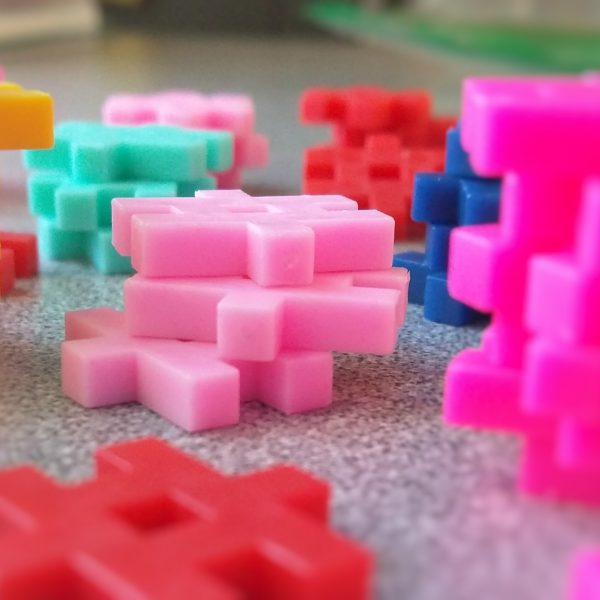The value of construction play for supporting children’s learning

Construction/constructive play – in which children use different materials to create or build something – is all about using a variety of mediums manipulated to create something new.
Typically goal focused, construction play brings together a variety of skills, and helps children to develop many others as the play progresses. The idea of constructive play was formalised by early childhood education theorist Jean Piaget, who worked extensively on understanding how children learn.
He believed that children learn by exploring the interaction between their ideas and the real world, and then experimenting to see how their ideas and the world around them correlate and fit together.
Piaget’s theories outline the belief that children have to go through a stage of functional play – time when they have been able to feel materials, understand different sizes, have some experience of learning what prevents pieces from falling, and exploring materials using all their different senses – before they are ready to construct.
To put this in an early childhood education and care (ECEC) context, children need to spend time in the nursery space touching, tasting, stacking and feeling various materials before they can move into toddler and preschool spaces playing with purpose, and constructing things with a pre-determined goal, such as setting up a cubby house, building something with blocks, or creating train tracks.
Studies suggest that when given various free play choices, children will choose constructive play more than 50 per cent of the time, making it an important aspect for educators and other professionals to consider in the context of the ECEC sector.
Materials for constructive play
Block play is often the first thing that comes to mind when people think of construction play, however materials for construction play can include mediums like sand, water, LEGO, play dough, wood, and other loose materials.
Construction play is less about what children are playing with, and more about how they play. When children engage in construction play, they are intentionally and creatively engaging with materials with a predetermined goal.
When children construct, they are behaving curiously, and using that curiosity to engage in hands-on inquiry work. During construction play, children are moving from their functional understanding of the world to the reality of how the materials behave.
Skills built during construction play
The learning opportunities that come from constructive play are vast. Much more than just building motor skills, construction play in early childhood builds skills in the following areas:
- Imaginative play: construction play allows children to build and create visual representations of imagined worlds and scenarios
- Language: when children work with one another in construction spaces, they are typically using language to negotiate play, communicate their expectations, challenge competing perspectives and advocate for their perspectives.
- Creativity: children encounter a variety of materials, and use them creatively to express their internal vision for the construction of their project.
- Mathematics: during construction play children are exploring mathematical concepts such as counting, shapes, sizes, symmetry and other concepts such as mass, floating and sinking, spatial positioning and more.
- Science: cause and effect, gravity, balance and problem solving skills are all explored during construction play, offering children the opportunity to revisit and refine these concepts through experimentation.
Boosting constructive play in ECEC settings
There are a number of ways in which ECEC settings catering for children of all ages can boost opportunities for constructive play, regardless of their context or setting.
One of the main ways to boost constructive play is to provide children with interesting and high-quality open-ended resources. Open-ended resources are key, because they are not designed to be used in any specific way, allowing children the freedom and opportunity to create their own “end game”.
Aside from wooden blocks, a perennial favourite in ECEC settings, examples of open ended materials include:
- Wood of different sizes and shapes
- Sticks and stones and other natural materials
- Water
- Sand and tools
- Car tyres or other wheels
- Wooden building blocks
- Recycled materials like cardboard boxes
- Train tracks
- LEGO or Duplo blocks
- Cogs and gears.
Another powerful driver for constructive play is leading by example. Children’s interest in constructive play can be sparked by educator modelling, by including construction examples in play spaces, and by challenging gender stereotypes.
Exposing children to challenges in their constructive play journey can also scaffold learning. Children should be encouraged to engage in constructive play in a variety of spaces, including outside, where they can explore the relationship between their ideas and more natural elements such as rain, wind, and the sun.
Engaging in constructive play outdoors can also free children from concerns about mess, or restrictions based on space – they may be able to build higher, make longer tracks, or extend their constructions further into the space around them.
Further resources
Some additional resources which may help ECEC educators, leaders and teams to explore the value of construction play include:
Popular

Workforce
Quality
Practice
Provider
Research
How one teacher is using Little J & Big Cuz to build empathy, understanding and confidence in First Nations learning
2025-12-08 07:15:19
by Fiona Alston

Quality
Policy
Practice
Provider
Economics
Research
Workforce
NQF Annual Report 2025: Quality gains continue, but sector faces compliance pressures and persistent equity gaps
2025-12-10 07:21:19
by Fiona Alston

Research
Provider
Intentional science play: a three‑stage pathway to foster children’s scientific literacy in the early years
2025-12-10 07:45:26
by Fiona Alston
















